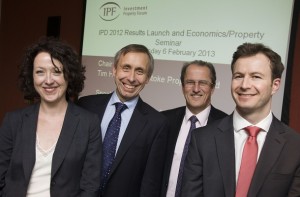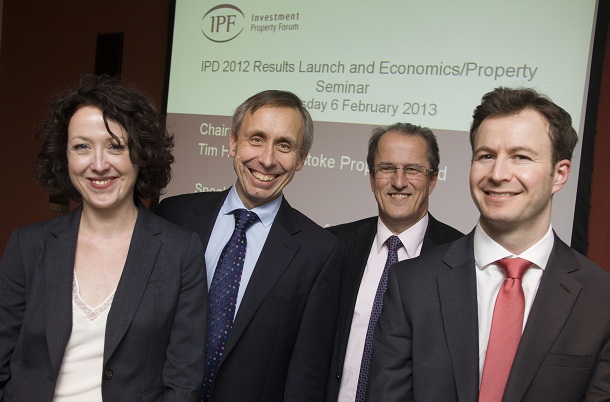 The regions took the brunt of the battering experienced by the UK commercial property sector last year, a new study has confirmed.
The regions took the brunt of the battering experienced by the UK commercial property sector last year, a new study has confirmed.
Total returns fell to 2.7 per cent in 2012 from 7.8 per cent in 2011, dragged down by tumbling capital values outside London and the South-east.
Values across the board fell by 3.1 per cent for the year, while income returns held up at six per cent, according to the Investment Property Databank’s Quarterly Property Index.
Stripping out the surging London scene the total return figure for all regions was just 0.4 per cent while outside the South East it was negative.
Property, said the IPD, had suffered its most challenging year since the downturn.
However, steady income returns were bringing some relief to investors even though rents remained flat.
The IPD’s annual presentation to Midlands members of the Investment Property Forum, held in the Birmingham offices of law firm DWF (formerly Cobbetts), found that, beneath the headline figures, the divergence in prices between London and the rest of the UK continued to grow.
Over 2012, values rose by five per cent in Central London, but fell by 5.8 per cent outside of the Capital.
The IPD said this polarisation in property prices had now reached “unprecedented levels”.
Since June 2009 the divergence had widened to over 35 per cent between Central London and the rest of the UK.
And it cautioned: “Though the focus of investors has shifted increasingly to income producing characteristics, which means utilising better value, more fringe or secondary assets, with secure leases and potential for active management, for the moment there has still been little indication of improvement in the majority of regional or secondary sectors.”
Malcolm Hunt, IPD UK and Ireland director of client services said: “London owners are taking advantage of continuing international demand and selling carefully selected assets to strategically boost their returns. Assets sold in Central London over 2012 delivered a return to investors of on average, 25 per cent.
“But without the effects of London, the market remains difficult, and regional declines are impacting on returns. However, it is worth noting that over the last five years, 95 per cent of portfolios measured have still delivered an average income return in excess of five per cent.”
He added: “Property is dividing the UK and there is no getting away from the bleak outlook for some sectors. Commercial space is a key indicator of economic performance, so it’s of little surprise to see regions faltering amid growing retail trauma and continued job cuts.”
Mr Hunt said that in Birmingham offices were struggling but retail and industrial was more positive – total 2012 returns per sector being offices, minus 5.9 per cent, retail, 0.7 per cent, and industrial, 2.5 per cent.
One bright spot was that lease analysis had pinpointed the attraction of “quality” secondary sector stock, a relatively new phenomenon.
Four asset types were measured in the study: long leased prime, short leased prime, long leased secondary and short leased secondary.
Since 2009, the best performing asset type had been long leased prime. However, consecutively over the last four years, long leased secondary stock had delivered higher returns than prime assets with short leases due to a combination of strong income returns and more competitive pricing.
In 2012 secondary long leased assets returned 3.6 per cent, opposed to 4.1 per cent for prime long lease, and 2.7 per cent for prime short lease.
Claire Higgins, head of research, BNP Paribas Real Estate, offered some positives for both the UK economy and the property sector.
It had been a “rocky road” in 2012, with GDP still more than three per cent below the start of the 2008-9 downturn. But by the end of this year things would look up on the back of improved global growth.
Business confidence was better than might be expected and the private sector was creating badly needed jobs.
She predicted steady 2.5 per cent a year growth by 2016/7 helped by a rise in consumer confidence and an improved housing market.
The effect on property would be total 2013 returns rebounding to around six per cent with an average eight per cent likely for the next five year period.
London would be the driver but its dominance over the regions would reduce.




















